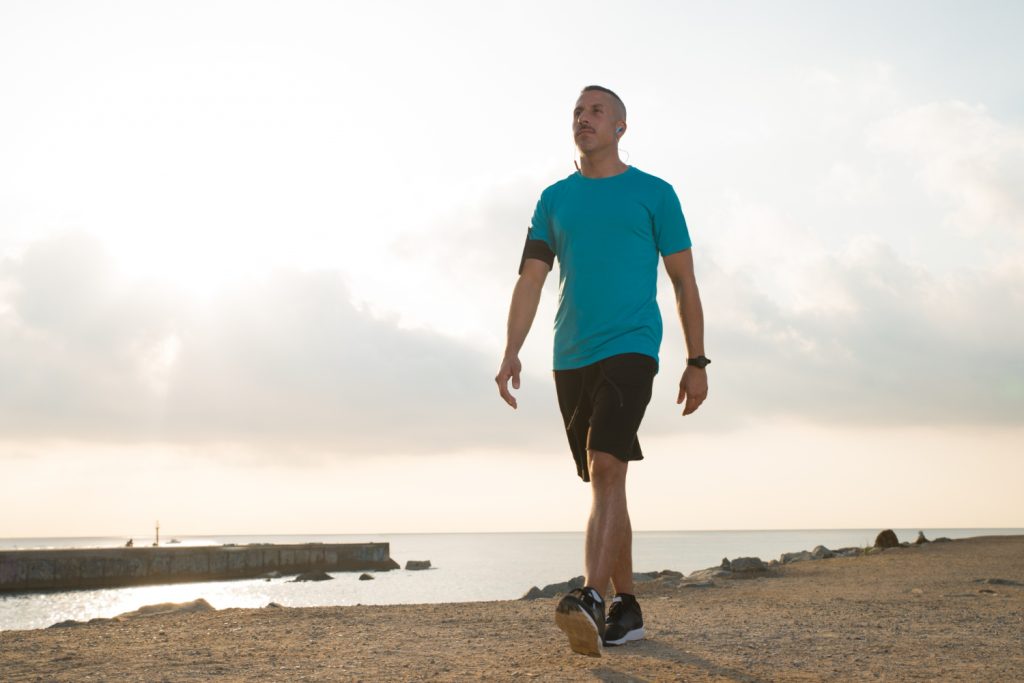Walking 10 Miles a Day: Benefits, Strategies & Tips

- Walking
- 08 Sep 2023
Introduction
Why walk 10 miles a day?
The most effective strategy to exercise and enhance your health is to walk 10 miles a day. Beginners should concentrate on improving their fitness gradually by beginning with modest distances and gradually rising over time to cover 10 miles a day rather than starting off by walking such a huge distance right away. It is regarded as essential since it can lower a person’s risk for cardiovascular disease, body mass index, waist circumference, and the prevalence of mental health issues such as anxiety, or depression in a person affected by these conditions. 1 Introduction | Researched based study from The Royal Marsden Cancer Charity , 2 Introduction | Researched based study from Better Health Channel

Advantages
What advantages does walking offer?
- Walking is a simple physical activity that doesn’t require any particular skills.
- It’s an activity that doesn’t require expensive gear or a gym membership.
- A single session of light to moderate physical activity may offer you advantages such as better sleep, memory, and/or capacity to think/learn precisely, which should be followed as part of your regular routine. 3 Advantages | Researched based study from Better Health Channel
Benefits

Health Benefits of walking every day
Walking every day can significantly improve your overall health and wellbeing. The following are some of the main health advantages of regular walking which are as follows:
- Increased muscular endurance and strength
- Improved cardiovascular health
- Reduced risk of chronic diseases such as obesity, or diabetes
- Increased Vigor and endurance
- Improved mental and emotional state
- Management of weight
- Lower chance of injury and improved bone health. 2 Benefits| Researched based study from Better Health Channel
Walking Vs Running
How does Running contrast with Walking?
- Walking improves general health and fitness, but to maximum the cardiovascular advantage, it’s required to increase the heart rate by walking longer distances such as 10 miles a day at a consistent pace.
- Compared to walking, running puts the body under certain strain that walkers who practice to log 10 miles each day do not experience thus making it an effective exercise than running. 1 Walking Vs. Running | Researched based study from The Royal Marsden Cancer Charity
Walking Gear
Recommended Attire for a daily walk of 10 mile
For daily walks of 10 miles, it is recommended to wear the apparel listed below, which includes:
- Suitable footwear (expert guidance should be sought on selecting the appropriate footwear)
- Comfortable shorts (should be worn especially during hot days)
- Good, roomy jacket that is windproof and waterproof with pockets
- Lower leg gaiters (to keep pant bottom dry). 1 Walking Gear | Researched based study from The Royal Marsden Cancer Charity
Strategies
How to walk 10 miles a day using different methods
Even though it may seem easy enough to walk 10 miles, it takes time to build up to that distance, especially if you intend to walk 10 miles every day. It will take significant planning to achieve this substantial objective given the time and effort it requires.
To attain your objective by integrating more walking in your daily routine, try these tips listed below:
- Walk the dog
- Stream some music
- Visit in person
- Take a walk while you wait
- Schedule daily walks
- Opt for stairs
Walk the dog
- If you don’t have a dog, offer to walk dogs at an animal shelter as a volunteer.
- As an alternative, you can combine socializing and fitness by walking a friend’s dog.
Stream some music
- Exercise is more fun when you’re motivated to go faster or farther by listening to uplifting music.
Visit in person
- Instead of sending a work email, go over to your colleague’s desk and communicate.
Take a walk while you wait
- If you have excess time before an appointment or while awaiting a flight, instead of sitting down take a walk.
Schedule daily walks
- To keep from forgetting your regular routine, set reminders for quick walks.
opt for stairs
- Stair climbing facilitates walking, which promotes calorie burning. 4 Strategies | Researched based study from Mayo Clinic
Weight Loss
Effects of daily walking on weight reduction
- Studies show that people who walk 10,000 steps per day, with 3,500 of those steps being taken at a moderate-to-vigorous pace in 10 minutes, are more likely to experience a weight loss over the course of 18 months.
- This response is further increased in people who walk 21,000 steps per day or who walk regularly 10 miles a day. 5 Weight loss | Researched based study from National Library of Medicine
How long does it take to walk 10 miles?
- Depending on your level of fitness, the terrain you’re walking on, and/or the grade of the track (whether you’re traveling on flat ground, going uphill/going downhill), walking 10 miles often takes between 2 and 3 hours. 5 Weight Loss | Researched based study from The Royal Marsden Cancer Charity
Tips
Tips for long walks
If it has been a while since you have walked vast distances, start out slowly. Gradually, improve the distance and speed of your stroll by following the below suggestions that include:
- Performing warm-up exercises
- Slowly increase your physical activity
- Applying the right method
- Wearing comfortable shoes and socks
Performing warm-up exercises
- To prepare for longer walks, start out slowly and warm up with some stretches and exercises.
Slowly increase your physical activity
- Begin with a 20-minute stroll, and then gradually extend it at least three times a week to increase your walking time.
Applying the right method
- Walk steadily by swinging your arms around freely, and try to stand as straight as you can.
- From heel to toe, take a step with your feet in a rolling motion to achieve longer distances.
Wearing comfortable shoes and socks
- To support you on longer walks, put on thick, comfy cotton socks and comfortable, light shoes. 2 Tips for long walks | Researched based study from Better Health Channel
Takeaway
What to expect from walking 10 miles a day
- Walking 10 miles a day is the best way to exercise and improve your health since it can reduce a person’s risk for cardiovascular disease, body mass index, waist circumference, and/or the incidence of mental health problems such as anxiety/depression
- Walking is a simple physical activity that doesn’t require any particular skills. You may benefit from a single session of mild to moderate exercise, which should become a regular part of your routine if you want to improve your sleep, memory, or ability to think clearly and learn new things
- Walking 10 miles a day greatly enhances your general health and well-being by increasing your muscular endurance and strength, cardiovascular health, and reducing your risk of chronic diseases (such as obesity, or diabetes), and weight
- Compared to walking, running puts the body under certain strain that walkers who practice to log 10 miles each day do not experience thus making it an effective exercise than running
- Walking 10 miles typically takes between 2 and 3 hours, depending on your degree of fitness, the terrain you’re on, and/or the gradient of the track (whether you’re moving on flat ground, going uphill, or going downhill). 1 Takeaway | Researched based study from The Royal Marsden Cancer Charity , 2 Takeaway | Researched based study from Better Health Channel , 3 Takeaway | Researched based study from Centers for Disease Prevention and Control
Any feedback on this article?
 This Articles content was accurate
This Articles content was accurate Very Informative Article
Very Informative Article I have a question or a comment
I have a question or a comment
 This article contains inaccurate content
This article contains inaccurate content This article was not helpful
This article was not helpful I have a question or a comment
I have a question or a comment
We appreciate your helpful feedback!
Checkout our social pages
References
-
The Royal Marsden Cancer Charity
Introduction | Walking Vs. Running | Walking Gear | Weight loss | Takeaway
-
Better Health Channel
Introduction | Benefits | Tips | Takeaway
-
Centers for Disease Prevention and Control
Advantages | Takeaway
-
Mayo Clinic
Strategies
-
National Library of Medicine
Weight loss





































